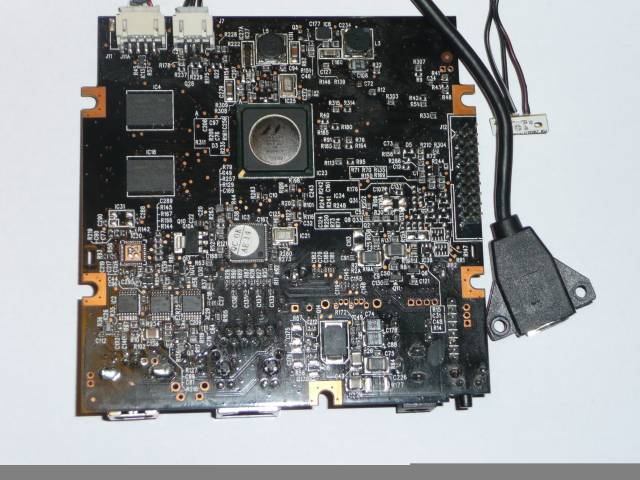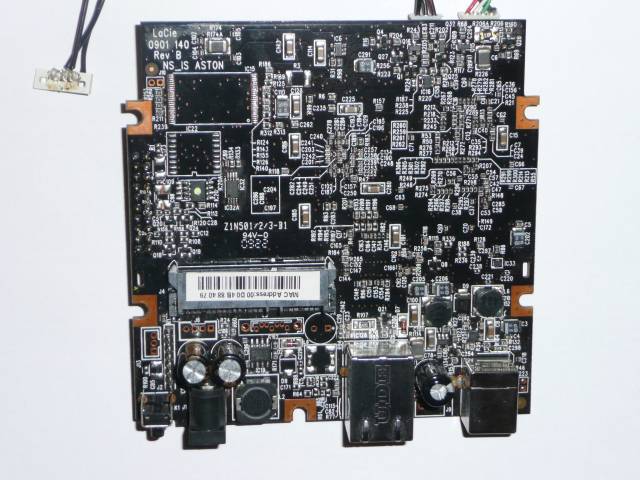This is an old revision of the document!
Table of Contents
LaCie Network Space v2
This page is relevant for Network Space (Max) v2 and Internet Space v2 boards.
Hardware
- CPU ARM926EJ-S (ARMv5TE) 800MHz
- SoC Kirkwood 88F6281_A0
- SDRAM memory 256MB, DDR2 533MHz
- SPI flash, NOR 512MB (MACRONIX MX25L4005CMI-12G)
- Ethernet Gigabit port (PHY MARVELL 88E1116R)
- 1 USB2 port, 1 connector host and 1 connector device (except for Internet Space v2)
- 1 SATA port (2 ports for Network Space Max v2)
- I2C EEPROM, 512 bytes (24C04 type)
- 2 LEDs (blue and red with CPLD SATA activity blink)
- Power push button
Openocd
An unreliable configuration is available here
U-Boot
The boards are almost fully supported mainline. For more informations, see our U-Boot for Kirkwood page.
Linux
The boards are almost fully supported mainline. For more informations, see our Linux for Kirkwood page.
Userspace
Auto power on
Normally, after applying power, you have to push the button to turn on the ns2. If you want it to switch on automatically, you have to switch a bit in the i2c eeprom. The eeprom is available for reading and writing under Linux at the pseudo file /sys/bus/i2c/devices/0-0050/eeprom. The content of the eeprom is the following:
| Offset | Meaning | Notes |
|---|---|---|
| 00..01 | Version/MAC Addresses | It indicates how many mac addresses are stored in the eeprom, it's always 00 02 (2) but only the first mac appears to be valid |
| 02..07 | Mac address | It's the mac address of your board |
| 08..13 | 2nd Mac address | Bogus mac address 01 FF FF FF FF FF |
| 14 | Power flag | 0 = wait for the button, 1 = auto power on |
| 15 | Fake sleepmode | Used by the Lacie stock initramfs, it's FD and you can ignore it |
Changing byte 14 from 0 to 1 will enable auto switch on.



